YAOSHANG: The Festival of Colours
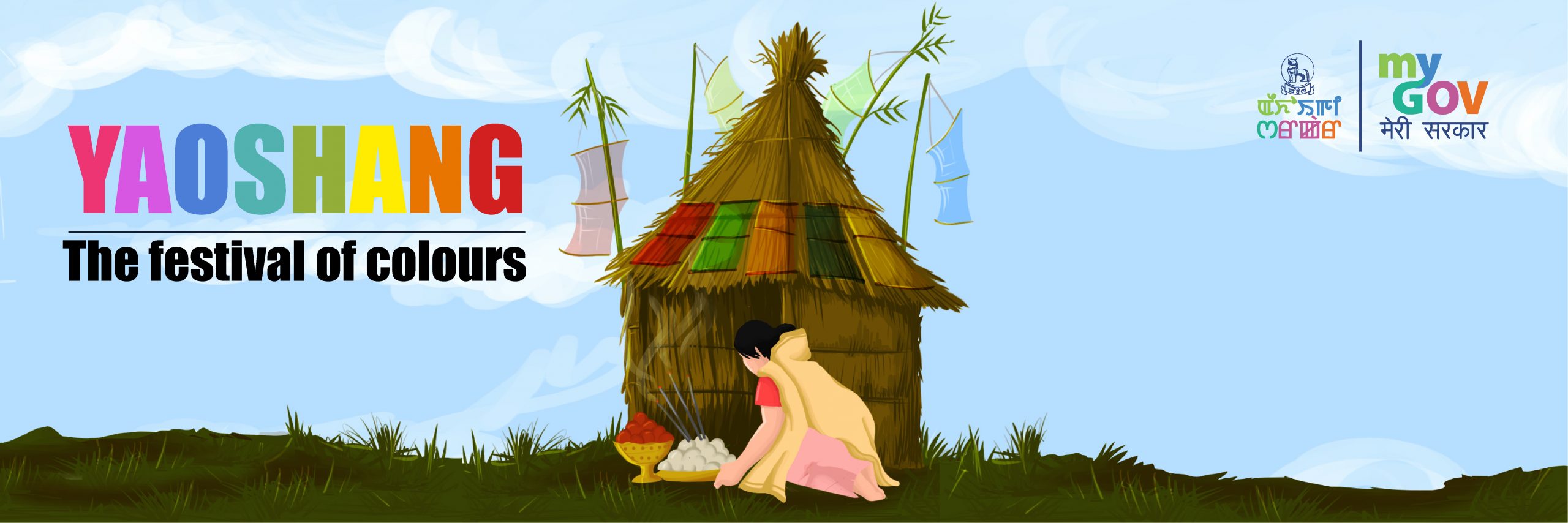
The festival of Yaoshang is considered one of the major festivals of Manipur. People from different communities come together to take part in the celebrations. A five-day event celebrated on the full moon day of the month of Lamta (February-March), the festival is generally celebrated at the same time as holi. But unlike Holi, the celebrations go far beyond just colours. The festival is celebrated with singing, dancing and many other traditional performances. It is celebrated with high spirits by the young and the old, irrespective of their gender and age. This festival represents the celebration of love amongst children, adults and people of all ages.
The five-day-long celebration begins with the burning of ‘yaoshang’ (a small thatch hut/straw hut) which is constructed with bamboo and straws on the first day. It is followed by the collection of donations from households by young boys and girls dressed in their best attires. Children visit nearby homes showering blessings of success and long and healthy life and they receive little monetary gifts as a donation from the households in return. This part of the celebration is called “nakatheng”. With the little donation they get, they buy themselves sweets or toffees or share among themselves with much joy and excitement.
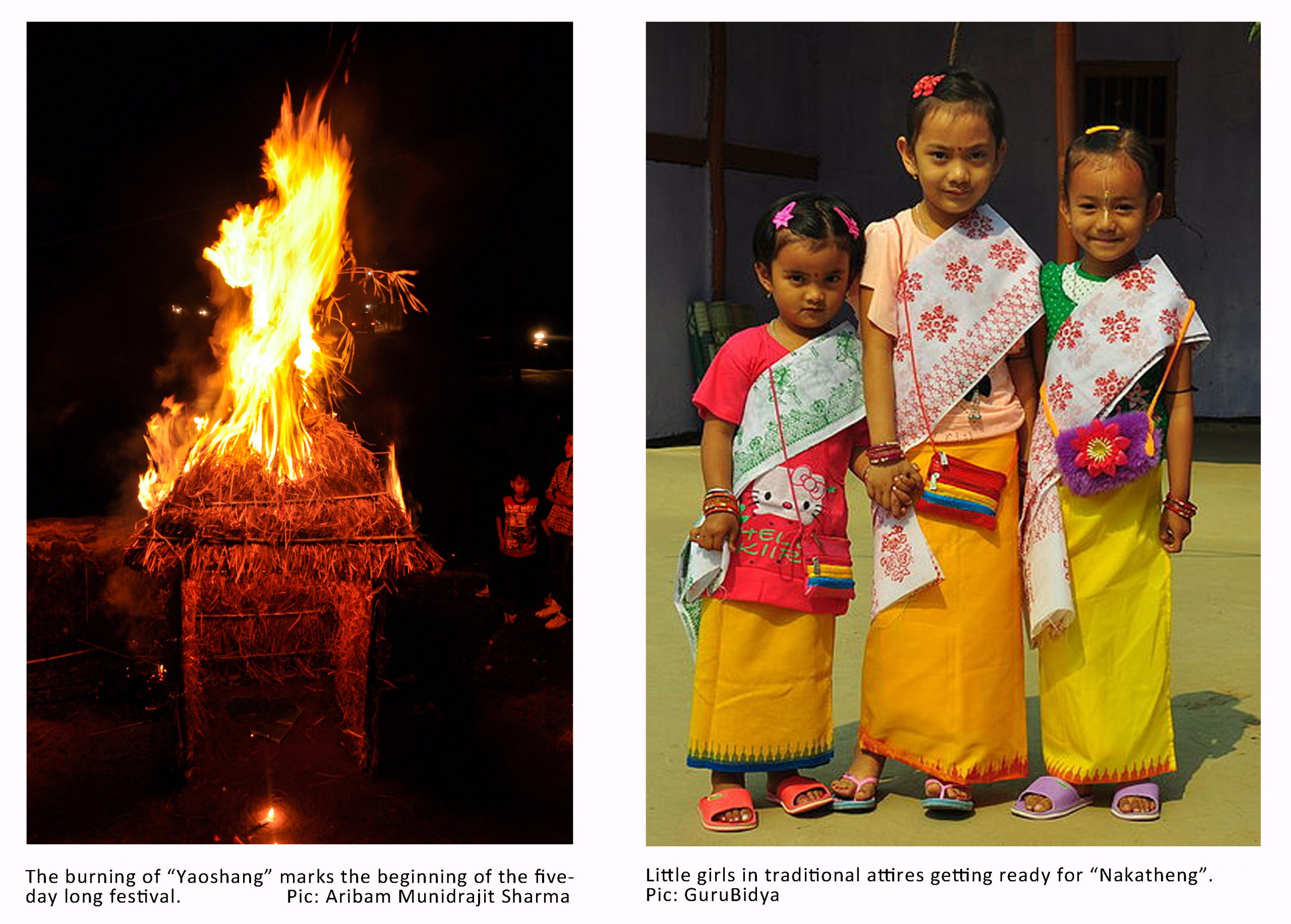
The highlight of the festival is the ThabalChongba, a traditional Manipuri folk dance where boys and girls hold hands and sing and dance in a circle. The literal meaning of ThabalChongba is ‘moonlight dance’ and is performed during night time. It is a typical Manipuri celebration of get-together by the night under the full moon. Strangers and friends alike get along with each other for the dance. They share good moments along with the thumps of music and laughter. This usually takes place on the second day of the festival while it can also take place on the other days of the festival. Married women also organize their Thabal Chongba event during Yaoshang. This is called ‘MouThabal’.
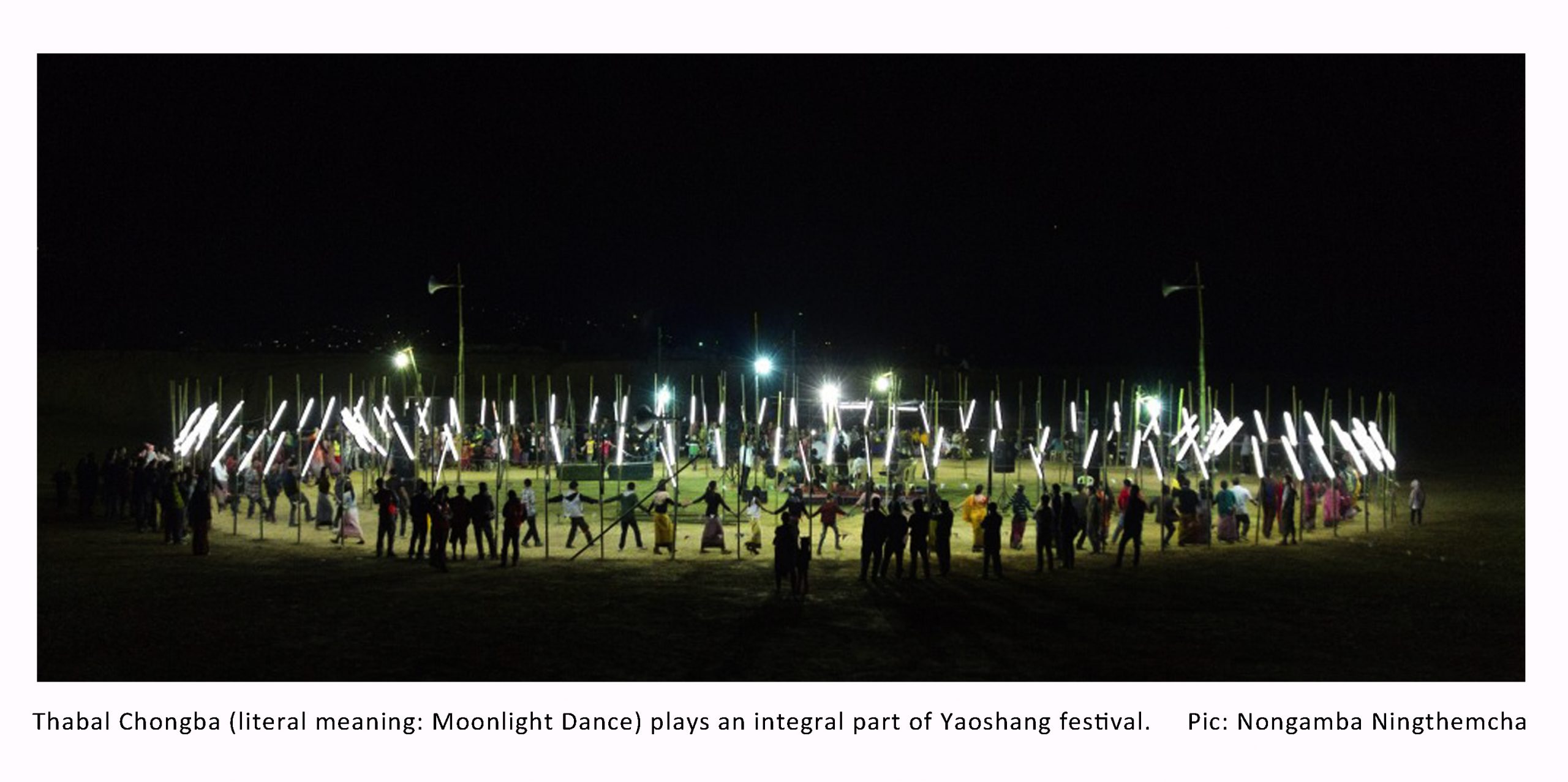
Children go to their relatives for nakatheng and block roads with ropes to collect money from people passing by at the start of the second day. Vaishnavite elders and other local sankirtana bands perform traditional ‘Pala Eshei’ (devotional songs). This is also known as “Holi Pala Esheishakpa”. They perform this at various places of worship including the Shree Govindajee Temple, Shree Shree Bijoy Govindaji Temple and other places such as from home to home. They also collect the money which is offered to them when they perform.
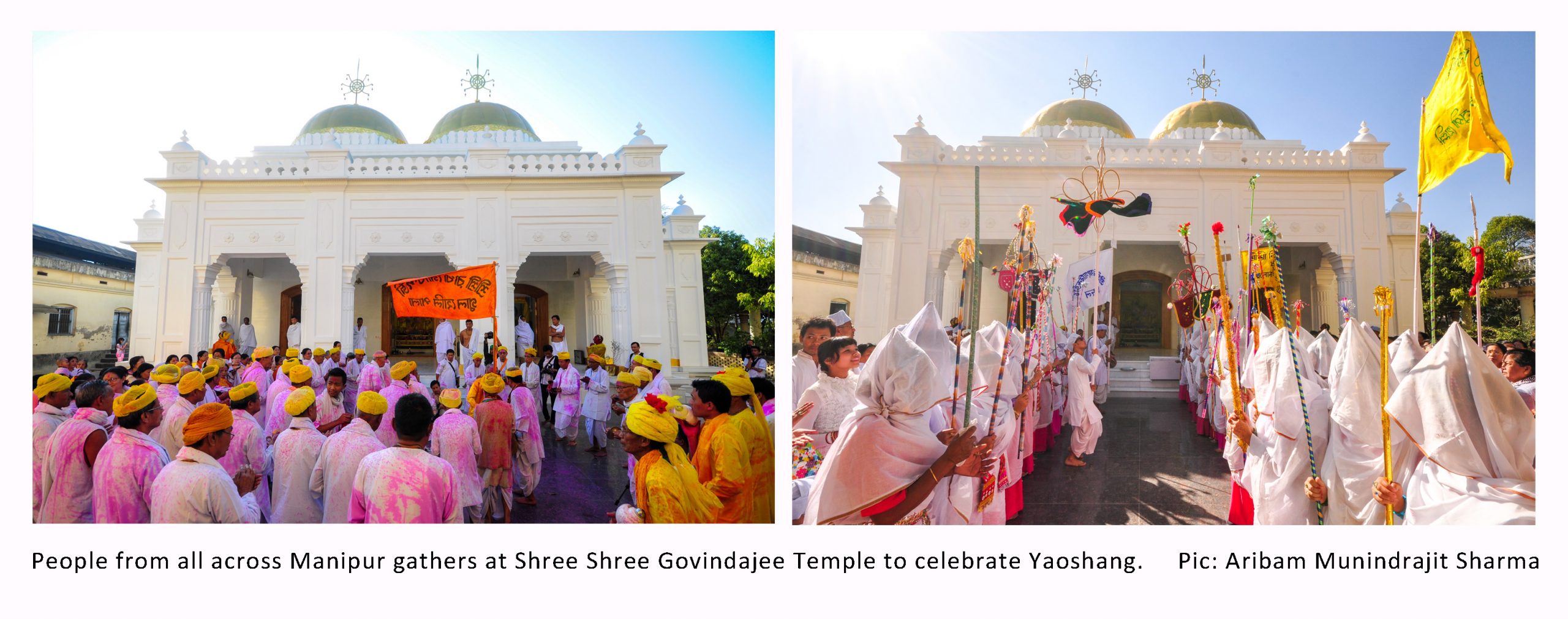
Colours are one of the significant aspects of the festival; people apply colours on the faces of each other ( aberteinaba) and children splash water among themselves with water guns (pichkari). The second day of Yaoshang is also better known as the ‘ Pichkarinumit’ (Pichkari day). This joy and excitement of playing with colours do not dip till the fifth or the last day of the festival. Other customs that we observe in the region are taking out a procession to a local temple, playing with colours and offering prayers to the deity.
Another significant part of Yaoshang, unlike the Holi, celebrated in other parts of India is that it is also a festival of sports. Most of the local communities and clubs organize sports on their local grounds and even on roadsides during the five days of Yaoshang. The primary idea behind Yaoshang sports is to steer the energetic youth away from veering towards drugs and alcohol and encourage them towards sports and games in the state which is already known as the powerhouse of sports in the country. Children and youths are given the opportunity to demonstrate their talents in various fields of sports, public appearance, public speaking etc. The activities motivate and allow the young ones to explore their talents in different fields.
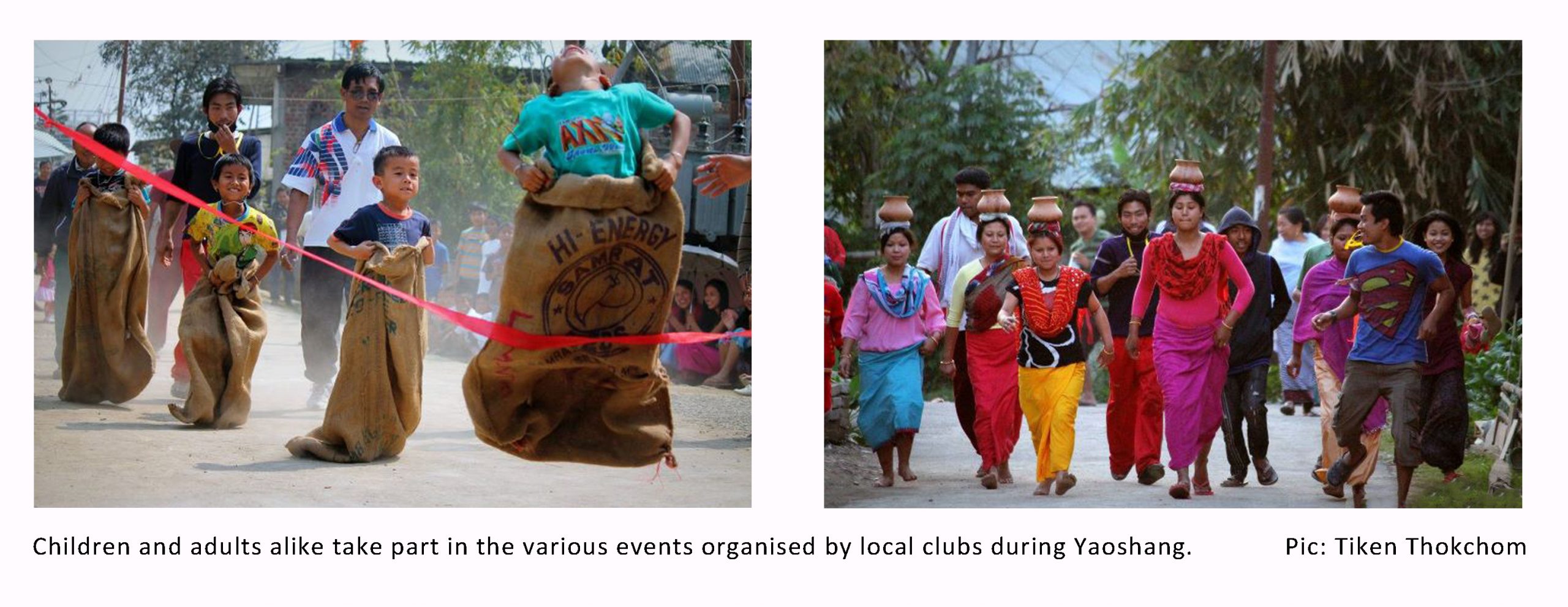
Various games including indigenous events such as Mukna and LaphuKabee are extremely popular during Yaoshang sports. Apart from sporting events; academic events like debate competitions, Extempore speech, song competitions, arithmetics competitions, poetry recitations, etc are also organized in the interests of budding students. Events like spoon race, tug of war, statue dance, football match, poon pubi, chafuthugaibi (blind hit), etc are organised for children, teenagers, married women, etc. Yaoshang sports is the time when married women participate the most. It serves as a medium to socialise in the normally busy life.
Besides the sports activities, other activities like ShumangLeela, a traditional theatre play, are also organized in various localities for people to get together and enjoy.
One of the most special features of Yaoshang starting the third day is the Mou and LeishabiChakchanaba. Married women and young girls of the locality will contribute their share of money and organize a feast. This includes the preparation of great local food and sharing them amongst each other. This is when all the women of the locality will gather and interact with each other. This way of organizing grand feasts in local communities has become an integral part of the festival.
Moreover, most of the offices and government departments are closed during the five-day Yaoshang. This provides an opportunity for every family to be together with their family members and children. Yaoshang denotes the coming of the spring season. It is the best time of the year in Manipur as it is usually the time when the sun shines along with trifles of rain rarely in between, where the gush of strong winds blow, trees and shrubs all green, flowers bloom bright, birds sing and people look forward to each coming beautiful day.
Have a colourful Yaoshang.



Total Comments - 0